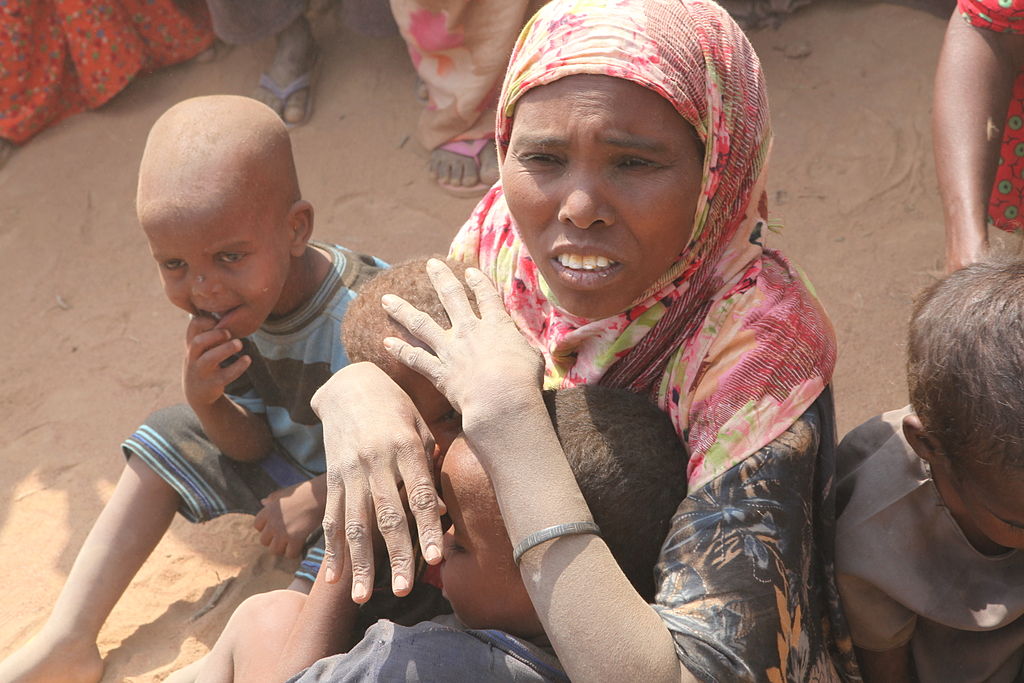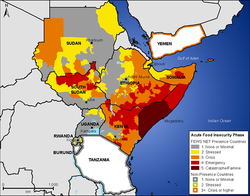Oxfam Horn of Africa famine refugee 01
Faduma Hussein Yagoub, who suffers from polio and has lost the use of her legs, came with her family to Dadaab on a donkey cart. Her husband and two of her five young children died of hunger on the way. Despite the dangers thousands of refugees every week are making the journey, walking for weeks across the desert and braving attacks by armed robbers and wild animals:
“We came from Somalia on a donkey cart to escape the war and the drought. It took us more than 15 days to get here. My husband and two of my young children died of hunger on the way. Near the border we were caught by bandits, who took everything we had. .
“We had to leave Somalia. There was shooting and killing innocent people. We came here because we thought we would get support. But there is no food, no water, no shelter. My children and I have not eaten anything since last night. There are many others like me, and we need your support."
Fadumo has a food ration card, but as she is disabled she cannot walk to get the food, so she relies on her neighbours to collect it for her.Relevante Bilder
Relevante Artikel
Hungerkrise am Horn von Afrika 2011Die Hungerkrise am Horn von Afrika 2011 bedrohte internationalen Organisationen zufolge etwa 11,5 Millionen Menschen in Somalia, Äthiopien, Kenia und Dschibuti (164.000). Von der Hungerkrise betroffen waren auch Eritrea und weitere ostafrikanische Staaten, doch liegen bezüglich dieser Gebiete keine zuverlässigen Daten vor. .. weiterlesen





